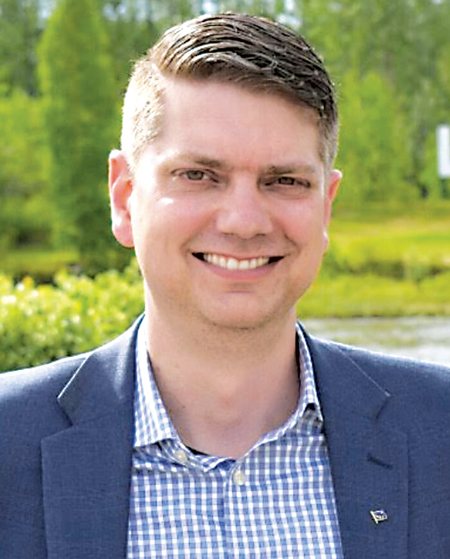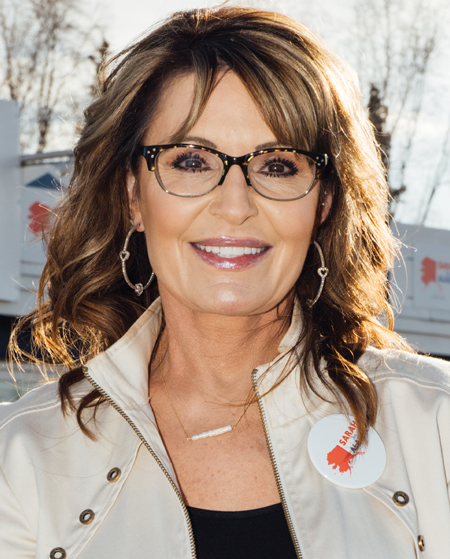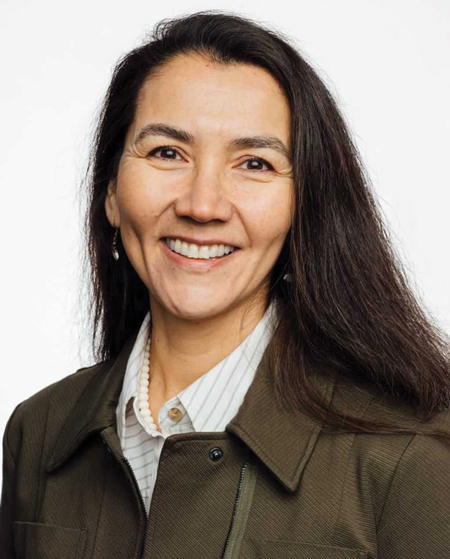





Who to Choose?
t’s election season, and in Alaska it’s an election year like none other. Two national seats are on the ballot, as well as the governor’s race and a broad field of state senators and representatives, not to mention ballot measures and other matters. Amid all the campaign furor, voters are learning the new ranked-choice voting system. There’s a lot to learn before the November 8 general election.
Associated General Contractors, or AGC, of Alaska seeks to provide information to its members so we can be well-informed. To that end, we have included a guide to using the ranked-choice ballot system. We also reached out to the top contenders for the US House seat vacated when longtime Congressman Don Young died this spring.
Bethel Democrat and former state lawmaker Mary Peltola won the special general election—filling the remaining four months of Young’s congressional term—but the race to fill the seat for the next two years is still on. In that race, four names will be on the ballot in November, but the lineup shifted slightly as this magazine came together; we initially reached out to Nick Begich, Sarah Palin, Mary Peltola, and Tara Sweeney, the top four vote-getters during the special primary race in August. Sweeney pulled out of the race just before this magazine went to print, likely leaving Chris Bye, who finished fifth in the pick-one primary, in the final slot on November election ballots. We have included responses we received from the top three contenders here.
Begich has served on the board for the Alaska Policy Forum, an organization dedicated to advancing opportunity through economic liberty and individual freedom. Additionally, Begich recently completed a fellowship with the Club for Growth Foundation, America’s leading free-enterprise, limited-government advocacy group. He served for five years on the board of directors for Matanuska-Susitna Borough-based MTA, one of the nation’s largest telecommunications cooperatives, and recently completed four years as the MTA Foundation’s board president.
Professionally, Begich has extensive experience in both corporate and startup settings and is involved in managing businesses both in Alaska and around the world. In fact, Begich was an initial investor in Raken, a leading construction-industry software platform. Begich and his wife Dharna live in Chugiak and are proud parents of their ten-year-old son.
Palin was elected to the Wasilla City Council in 1992 and defeated the incumbent mayor in 1996. In 2003, she became chair of the Alaska Oil and Gas Conservation Commission, and in 2006 she defeated the incumbent Governor Frank Murkowski to become Alaska’s youngest governor—and its first female governor. In 2008, Palin was the first female Republican nominee on a presidential ticket.
In elections ever since, Palin’s endorsement has been one of the most sought-after in American history, and she has been responsible for the election of patriotic Americans across the country. Palin has stayed active as a resident of Wasilla, where her youngest son attends middle school.
Peltola was born in Alaska and raised on the Kuskokwim River in Kwethluk, Tuntutuliak, Platinum, and Bethel. She began fishing commercially with her father when she was six and worked during college as a herring and salmon technician for the Alaska Department of Fish and Game.
At age twenty-two, Peltola began an internship with the Alaska Legislature. That same year, she ran for office and lost. Two years later, Peltola won her election and began representing the Bethel region in the state House. As a lawmaker, Peltola helped rebuild the Bush Caucus, which passed legislation and influenced budgets that improved lives in rural Alaska. After leaving the legislature, she worked as Manager of Community Development and Sustainability for the Donlin Gold Project. She left the company after six years and joined the Kuskokwim River Inter-Tribal Fish Commission. As executive director of the commission, she helped mobilize 118 tribes and rural Alaskans to advocate for the protection of salmon runs in Western Alaska. This was a continuation of her work as a Salmon Fellow with the Alaska Humanities Forum.
Peltola served on the Orutsararmiut Native Council Tribal Court and the Bethel City Council as well as on the boards of The Nature Conservancy, the Alaska Humanities Forum, the Alaska Children’s Trust, and Russian Orthodox Sacred Sites in Alaska. A lifelong Alaska, she is adamantly pro-jobs, pro-fish, pro-family, and pro-choice.

(courtesy)

(courtesy)

(courtesy)
In recent years, underinvestment in Alaska has driven firms out of business and workers out of state. Here in Alaska and across the nation, the construction industry develops and maintains the core infrastructure we need to ensure prosperity and opportunity reaches all.
Investments in hard infrastructure will ensure that our nation’s roads, bridges, ports, rail, schools, homes, workplaces, and military installations are equipped to meet the needs of the twenty-first century. To make this happen, we must ensure that trade careers remain attractive and accessible; unnecessary regulations are eliminated; and construction investment is predictable and steady. With government regulation out of the way and a focus on tangible investment, America will continue to flourish.”
We also, however, must implement sound economic policies that encourage private spending on things like new residential and commercial construction. Lower taxes, fewer unnecessary regulations, and greater freedom to develop our God-given natural resources will ignite the construction industry once the radical left, including so many anti-developers, no longer call the shots in Washington.
What’s good for the construction industry is good for the whole economy—construction workers create huge value with everything they build, while putting money back into the community. And I’m the biggest proponent of vo-tech education! We need Alaskans skilled-up in these hugely rewarding construction jobs.”
In Bethel, we receive a majority of our supplies via air cargo. If the planes stop coming, we are in big trouble. Alaska needs infrastructure repairs and updates, we cannot wait any longer.
Families across our state are finding it increasingly difficult to find housing. We must encourage the construction of housing across our state and repurpose existing vacant buildings into family dwellings.
The late Don Young worked tirelessly to bring federal dollars to Alaska for construction projects and I plan to carry on that legacy. In addition to federal money, I will work toward attracting more private-sector investment because that has shown a correlation with higher wages. Our construction industry is ready to tackle new projects that will attract workers to our state and improve the lives of Alaskans.”

(courtesy)
In recent years, underinvestment in Alaska has driven firms out of business and workers out of state. Here in Alaska and across the nation, the construction industry develops and maintains the core infrastructure we need to ensure prosperity and opportunity reaches all.
Investments in hard infrastructure will ensure that our nation’s roads, bridges, ports, rail, schools, homes, workplaces, and military installations are equipped to meet the needs of the twenty-first century. To make this happen, we must ensure that trade careers remain attractive and accessible; unnecessary regulations are eliminated; and construction investment is predictable and steady. With government regulation out of the way and a focus on tangible investment, America will continue to flourish.”

(courtesy)
We also, however, must implement sound economic policies that encourage private spending on things like new residential and commercial construction. Lower taxes, fewer unnecessary regulations, and greater freedom to develop our God-given natural resources will ignite the construction industry once the radical left, including so many anti-developers, no longer call the shots in Washington.
What’s good for the construction industry is good for the whole economy—construction workers create huge value with everything they build, while putting money back into the community. And I’m the biggest proponent of vo-tech education! We need Alaskans skilled-up in these hugely rewarding construction jobs.”

(courtesy)
In Bethel, we receive a majority of our supplies via air cargo. If the planes stop coming, we are in big trouble. Alaska needs infrastructure repairs and updates, we cannot wait any longer.
Families across our state are finding it increasingly difficult to find housing. We must encourage the construction of housing across our state and repurpose existing vacant buildings into family dwellings.
The late Don Young worked tirelessly to bring federal dollars to Alaska for construction projects and I plan to carry on that legacy. In addition to federal money, I will work toward attracting more private-sector investment because that has shown a correlation with higher wages. Our construction industry is ready to tackle new projects that will attract workers to our state and improve the lives of Alaskans.”